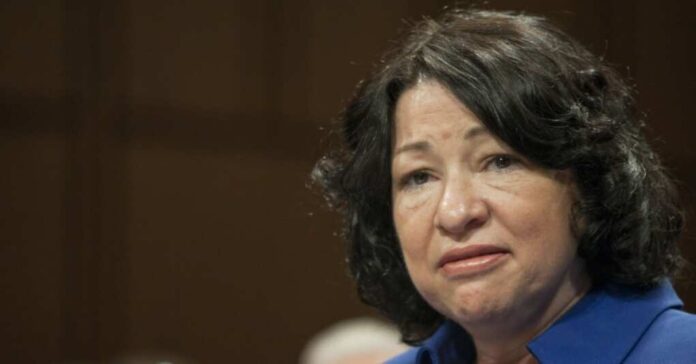
As the political landscape changes, there is increasing interest in the competence of aging politicians. One such case is the liberal push for Supreme Court Justice Sonia Sotomayor’s retirement. Sotomayor has proven her capability, but liberals want her to retire solely due to her age. On the other hand, President Joe Biden, who is the oldest sitting president, has been receiving unwavering support from his liberal followers.
Despite Biden’s age, he has been an influential figure in the political arena. However, concerns have been raised regarding his observed memory and balance problems. This curious juxtaposition between the two situations raises questions about how age is perceived in the political sphere. This contrast lays bare a complex web of strategic calculations, priorities, and, perhaps, an undercurrent of selective ageism within the Democratic Party.
The call for Justice Sotomayor’s retirement at the age of 69 is driven by a tactical desire to ensure a younger, reliably liberal justice can secure her seat, thus preventing a further conservative tilt of the Supreme Court, especially in the face of a possible return of Donald Trump to the presidency in 2024.
Justice Sotomayor has expressed being exhausted by the high volume of cases the Supreme Court currently handles. However, her retirement decision is crucial in maintaining the liberal majority on the bench. As a result of the upcoming elections, Justice Sotomayor may need to remain on the court until Democrats regain power, which historically takes several years.
The push for Sotomayor’s retirement is underscored by the urgency to preempt a 7-2 conservative majority. The request highlights a strategic foresight aimed at safeguarding liberal judicial precedents for decades to come.
The rationale is steeped in recent history’s lessons, notably the aftermath of Justice Ruth Bader Ginsburg’s death and the swift confirmation of Justice Amy Coney Barrett, which solidified the court’s conservative majority. The absence of Republican control over the Senate floor eliminates the possibility of delaying the appointment of a future liberal judge.
On the flip side, the continued support for President Biden, despite visible signs of aging, raises intriguing questions about the Democratic Party’s stance on age and leadership capability. Biden, hailed as “Sleepy Joe” by critics, represents a paradox within the party’s ranks—a revered figure for his extensive political career and scrutinized for the vulnerabilities of advanced age. While a symbol of experienced leadership, his presidency also brings to light the complexities of navigating high-stakes political arenas when questions of age-related decline are in play.
This juxtaposition reflects a growing dilemma within the Democratic Party, where strategic considerations may inadvertently underscore a form of selective ageism. The readiness to advocate for Sotomayor’s retirement, prioritizing long-term judicial strategy over the personal choice and readiness of individual justice, contrasts sharply with the protective stance towards Biden. It underscores a calculated, albeit uncomfortable, balancing act between preserving immediate political power and ensuring the judiciary’s liberal future.
Moreover, the reluctance among some Democrats to publicly champion the cause for Sotomayor’s retirement, fearing perceptions of insensitivity or gauche, further complicates the narrative. It suggests an underlying tension between pragmatic political strategy and the values of respect and autonomy for seasoned leaders within the party’s echelons. This reticence points to a broader discomfort with openly addressing the implications of aging on leadership, a conversation that becomes all the more pertinent in the context of Biden’s presidency.
The Democratic Party’s handling of these intertwined issues of age, leadership, and judicial strategy speaks volumes about the challenges of navigating the political landscape in an era where longevity and capability are increasingly central to public discourse. As the Democratic party considers the potential benefits of having a younger Supreme Court, it is also faced with the ethical and public relations challenges of suggesting that one of its own should retire. Additionally, it must confront the wider impact of its position regarding an aging President.






